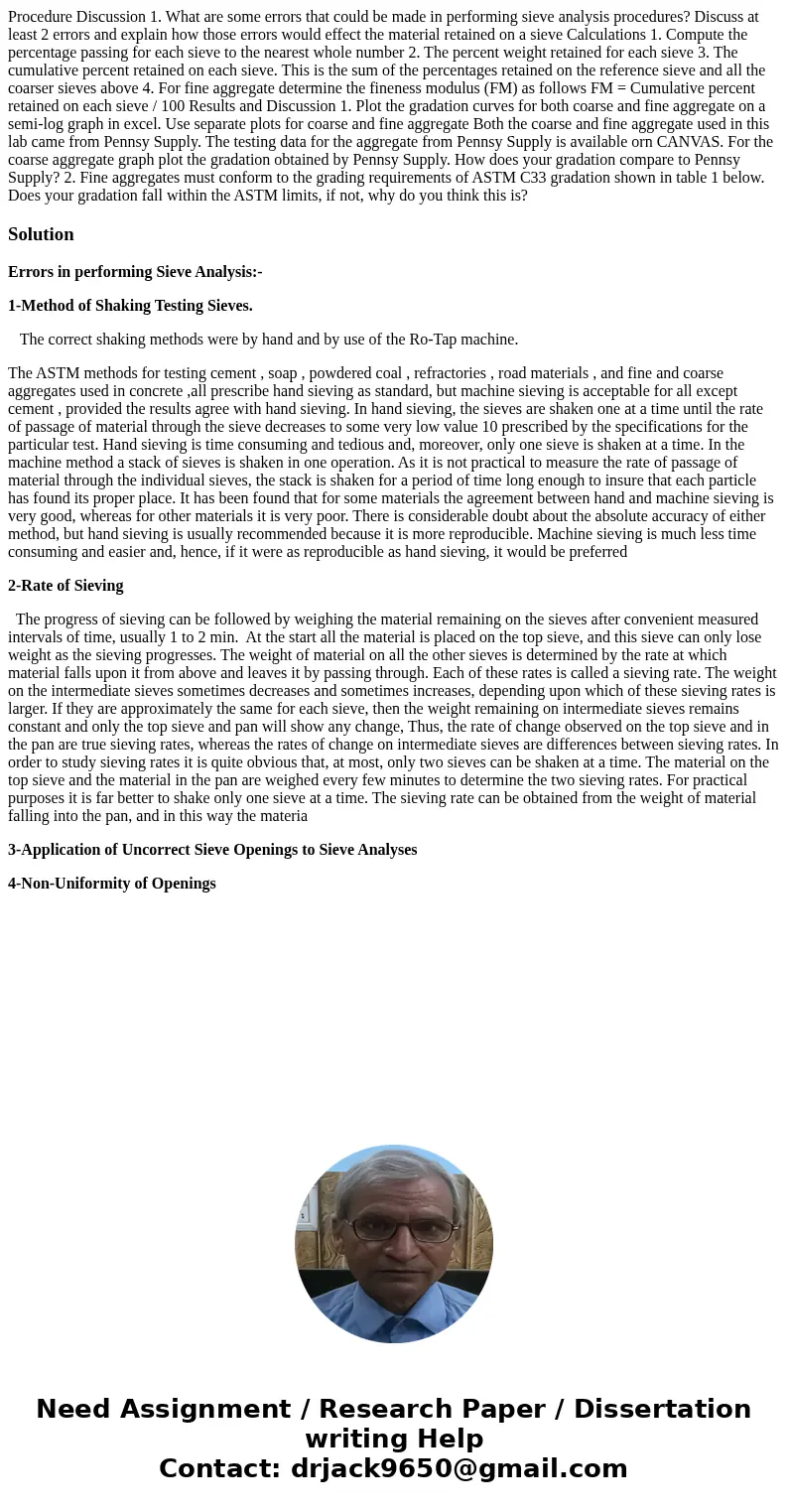Procedure Discussion 1 What are some errors that could be ma
Solution
Errors in performing Sieve Analysis:-
1-Method of Shaking Testing Sieves.
The correct shaking methods were by hand and by use of the Ro-Tap machine.
The ASTM methods for testing cement , soap , powdered coal , refractories , road materials , and fine and coarse aggregates used in concrete ,all prescribe hand sieving as standard, but machine sieving is acceptable for all except cement , provided the results agree with hand sieving. In hand sieving, the sieves are shaken one at a time until the rate of passage of material through the sieve decreases to some very low value 10 prescribed by the specifications for the particular test. Hand sieving is time consuming and tedious and, moreover, only one sieve is shaken at a time. In the machine method a stack of sieves is shaken in one operation. As it is not practical to measure the rate of passage of material through the individual sieves, the stack is shaken for a period of time long enough to insure that each particle has found its proper place. It has been found that for some materials the agreement between hand and machine sieving is very good, whereas for other materials it is very poor. There is considerable doubt about the absolute accuracy of either method, but hand sieving is usually recommended because it is more reproducible. Machine sieving is much less time consuming and easier and, hence, if it were as reproducible as hand sieving, it would be preferred
2-Rate of Sieving
The progress of sieving can be followed by weighing the material remaining on the sieves after convenient measured intervals of time, usually 1 to 2 min. At the start all the material is placed on the top sieve, and this sieve can only lose weight as the sieving progresses. The weight of material on all the other sieves is determined by the rate at which material falls upon it from above and leaves it by passing through. Each of these rates is called a sieving rate. The weight on the intermediate sieves sometimes decreases and sometimes increases, depending upon which of these sieving rates is larger. If they are approximately the same for each sieve, then the weight remaining on intermediate sieves remains constant and only the top sieve and pan will show any change, Thus, the rate of change observed on the top sieve and in the pan are true sieving rates, whereas the rates of change on intermediate sieves are differences between sieving rates. In order to study sieving rates it is quite obvious that, at most, only two sieves can be shaken at a time. The material on the top sieve and the material in the pan are weighed every few minutes to determine the two sieving rates. For practical purposes it is far better to shake only one sieve at a time. The sieving rate can be obtained from the weight of material falling into the pan, and in this way the materia
3-Application of Uncorrect Sieve Openings to Sieve Analyses
4-Non-Uniformity of Openings

 Homework Sourse
Homework Sourse